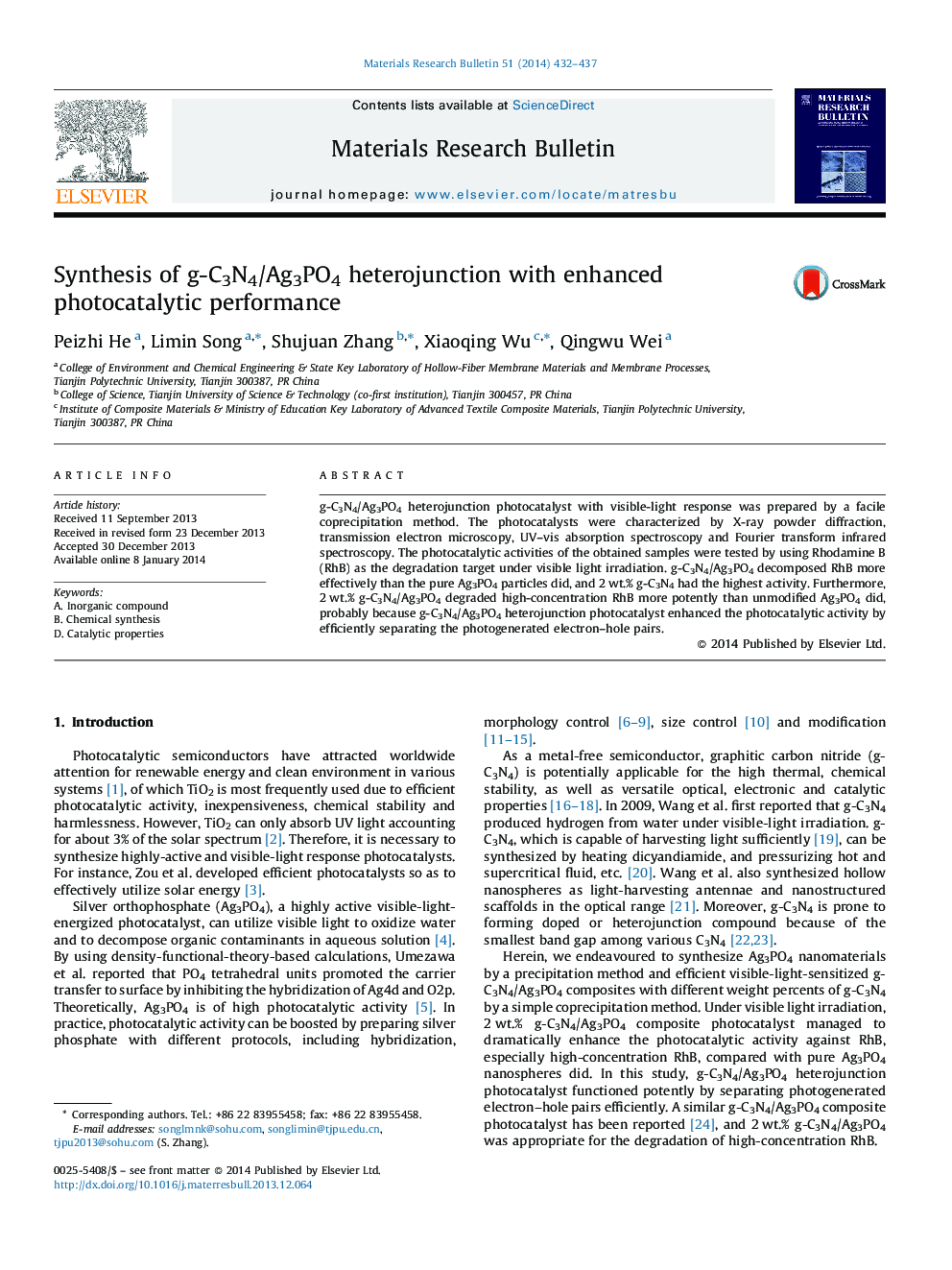| Article ID | Journal | Published Year | Pages | File Type |
|---|---|---|---|---|
| 1488222 | Materials Research Bulletin | 2014 | 6 Pages |
•g-C3N4/Ag3PO4 heterojunction showed much higher activity than that of Ag3PO4.•The high activity could be attributed to g-C3N4 for modifying Ag3PO4.•More OH radicals may be significant reason to improve Ag3PO4 activity.
g-C3N4/Ag3PO4 heterojunction photocatalyst with visible-light response was prepared by a facile coprecipitation method. The photocatalysts were characterized by X-ray powder diffraction, transmission electron microscopy, UV–vis absorption spectroscopy and Fourier transform infrared spectroscopy. The photocatalytic activities of the obtained samples were tested by using Rhodamine B (RhB) as the degradation target under visible light irradiation. g-C3N4/Ag3PO4 decomposed RhB more effectively than the pure Ag3PO4 particles did, and 2 wt.% g-C3N4 had the highest activity. Furthermore, 2 wt.% g-C3N4/Ag3PO4 degraded high-concentration RhB more potently than unmodified Ag3PO4 did, probably because g-C3N4/Ag3PO4 heterojunction photocatalyst enhanced the photocatalytic activity by efficiently separating the photogenerated electron–hole pairs.
Graphical abstractg-C3N4/Ag3PO4 heterojunction photocatalyst with visible-light response was prepared by a facile coprecipitation method. The results show that g-C3N4/Ag3PO4 possesses a much higher activity for the decomposition of RhB than that of the pure Ag3PO4 particles. The most mechanism is that g-C3N4/Ag3PO4 heterojunction photocatalyst can efficiently separate the photogenerated electron–hole pairs, enhancing the photocatalytic activity of g-C3N4/Ag3PO4 composites.Figure optionsDownload full-size imageDownload as PowerPoint slide
